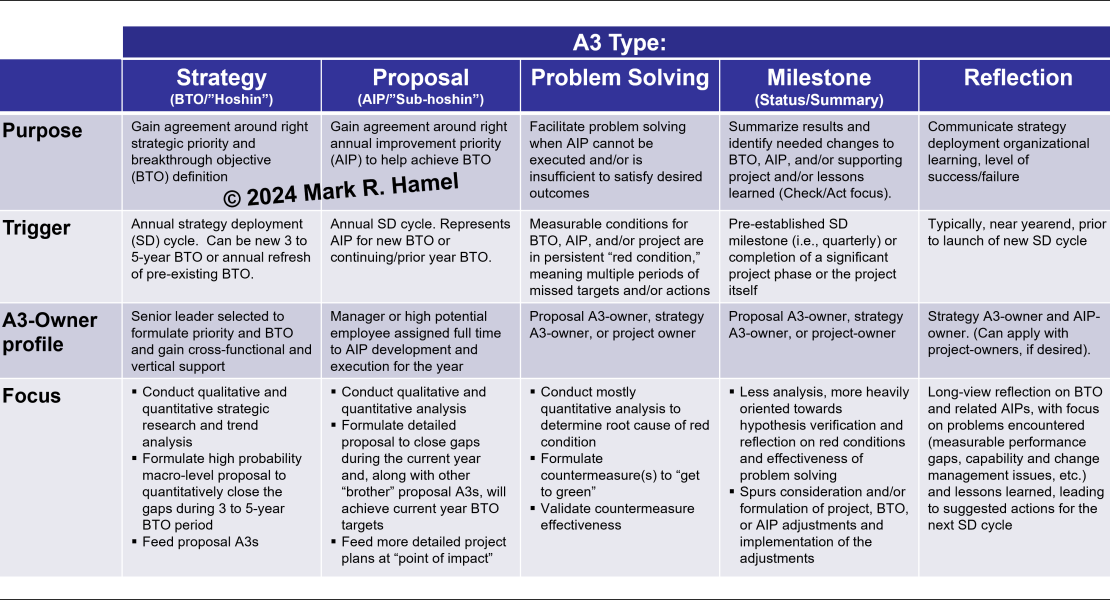Matrices help prompt, organize, and efficiently display information. When the design is standardized, such as with (most) strategy deployment x-matrices, they facilitate a quick, universal grasp of the individual fields and their relationship with other fields. For example, a seasoned user can glance at an x-matrix and discern the small handful of breakthrough objectives, the associated annual (meaning this year’s) measurable targets, the corresponding annual improvement priorities, and their targets and means. In many ways, the strategy deployment x-matrix is a super-concise clockwise study and portrayal of causality and countermeasures.
Or is it?
Like any tool, the x-matrix can be misapplied. Unfortunately, folks often populate the x-matrix with less than effective background research and analysis. (Heck, I’m pretty sure some people load the x-matrix counter-clockwise, starting with their pet projects.) This can render the strategy deployment effort a superficial exercise, devoid of critical thinking. The unintended consequences likely include engaging the organization in a wild goose chase of wrong and/or excessive objectives using lame countermeasures that people rightly think are stupid and won’t support.
Of course, plenty of organizations fill out x-matrices and then don’t reference or revisit them until the following year. I suppose ignoring them sometimes is the better option.
Show Your Work, Show Your Thinking
It seems impossible to understand any deployed strategy, specifically the what, why, how, when, and who unless the “story” is explicit and intelligible. Like in math class, there should be a lot of points off if we don’t show our work. That’s the path of laziness, bias, and/or ineptitude.
For example, without a convincing, logical argument how can a leadership team (or anyone) agree whether a particular breakthrough objective reflects the right strategy? Or how can they reach consensus that our planned actions represent the right tactics (to satisfy the right strategy)? The answer is, they really can’t.
Coaching, catchball, alignment, and governance are hamstrung without transparency and rigor of thought and action. As lean leaders we must guide the organization to think deeply and constantly reflect and refine that thinking. Indeed, effective strategy deployment requires proper tracking through the entirety of the PDCA cycle. The five A3 types, outlined in the figure, help as follows:
- Plan: strategy A3, proposal A3
- Do: execute the plan delineated above (and specified in project plans)
- Check: problem solving A3, milestone A3, reflection A3
- Act: make the adjustments prompted by the check activities above
Hopefully, it is evident how these A3s can prompt proper discipline.
“One-pagers,” perhaps counterintuitively, require tremendous work and take years to master the practice. But A3s pack a huge punch of insight and learning…and AFTER you’re “done,” if you’re really compelled, you can still jam some of the info from your strategy and proposal A3s into one or more x-matrices.

